Imagine you’re working and those cravings for coffee kick in. You get up briefly to make yourself a cup and come back to a black screen. But why does this happen? Well, Windows 11 has the screen timeout setting enabled by default. This setting turns off your screen after a certain period of inactivity. But is it possible to adjust Windows 11 screen timeout settings? Keep reading to find out.
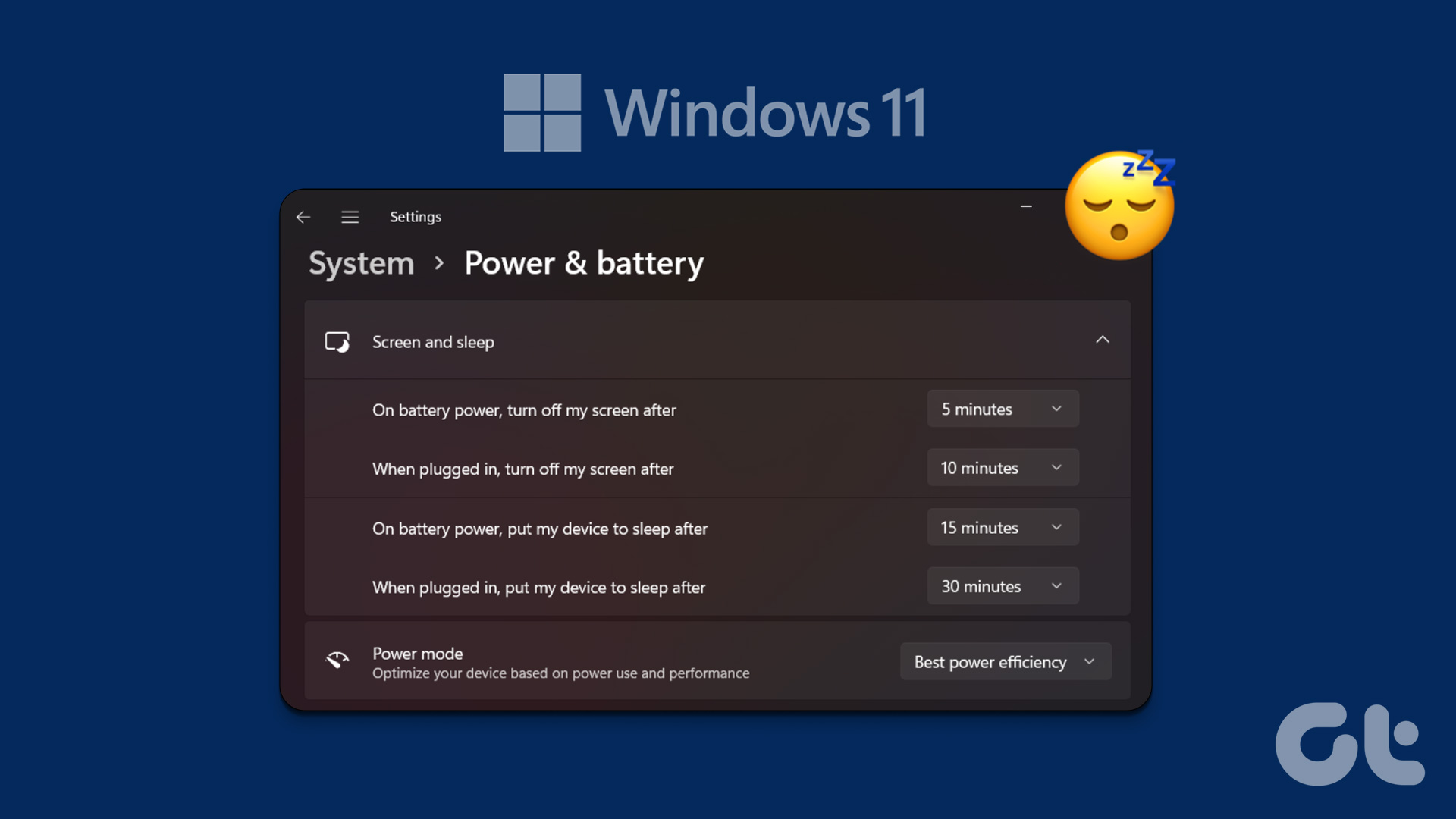
Unlike putting your device to sleep, screen timeout simply turns off the screen. So moving your cursor or using the keyboard will instantly revive your device, with the screen opening where you left off. This can be useful if you want to save on battery power.
However, once the screen timeout period is over, your device may go to sleep. So, keep reading as we look at 3 easy ways to change screen timeout in Windows 11.
1. Change Windows 11 Screen Timeout Using Settings
You can easily change the Windows 11 screen timeout duration using the Settings app. This will allow you to adjust the screen timeout duration when your device is plugged in and on battery. Follow the steps below to do so.
Step 1: Right-click on the Windows icon and click on Settings in the options.


2nd step: Select the System tab from the sidebar, scroll down and click “Power & Battery” on the right.


Step 3: Here, click on “Screen and sleep” to expand the options.


Step 4: Now click on the drop-down menu next to “On battery, turn off my screen after” to adjust the screen timeout duration when your device is on battery.
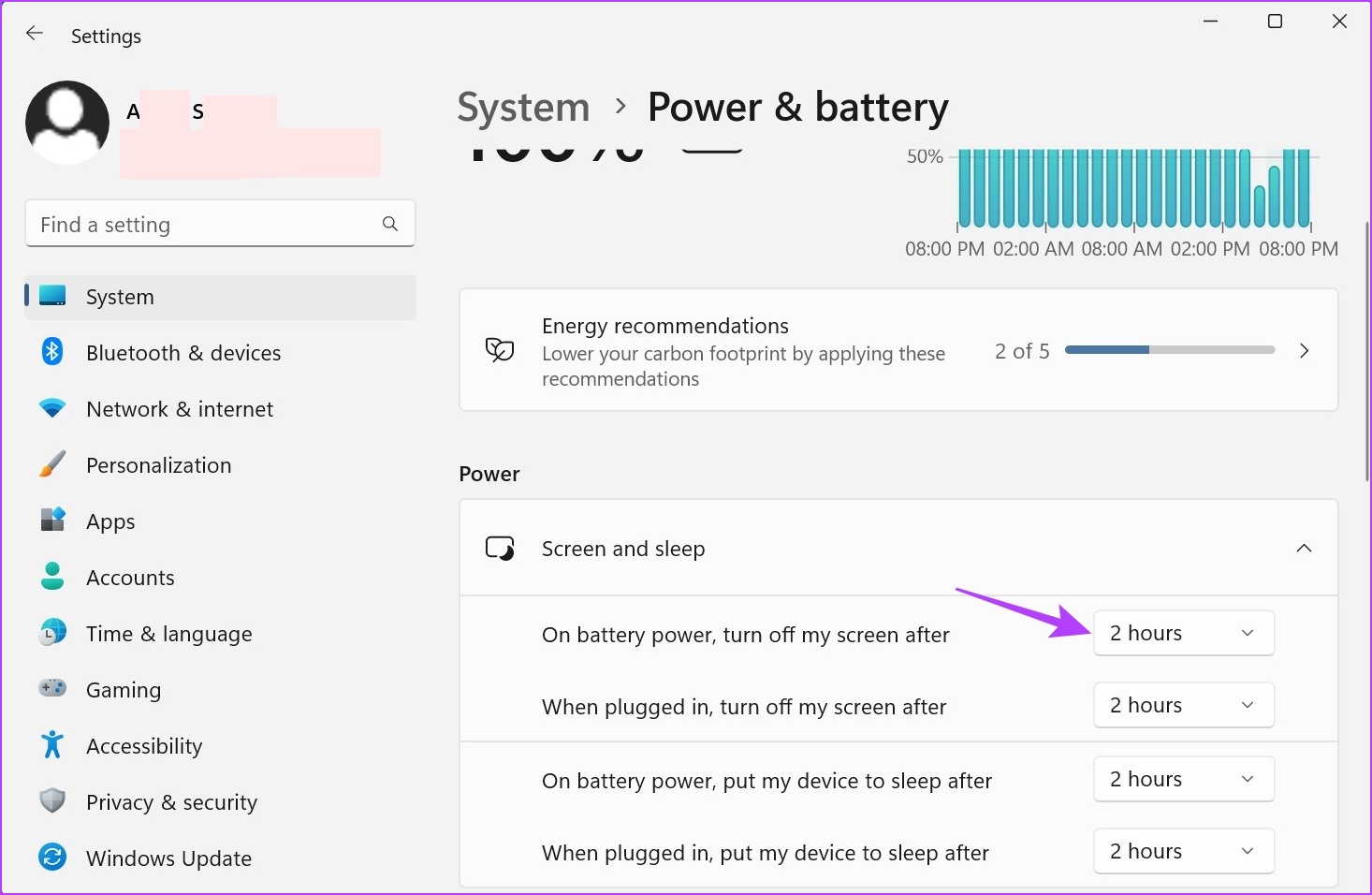

Step 5: Select your preferred duration from the given timeout options.


Step 6: Next, click the drop-down menu next to “When plugged in, turn off my screen after” to change the screen timeout duration when your device is plugged in.
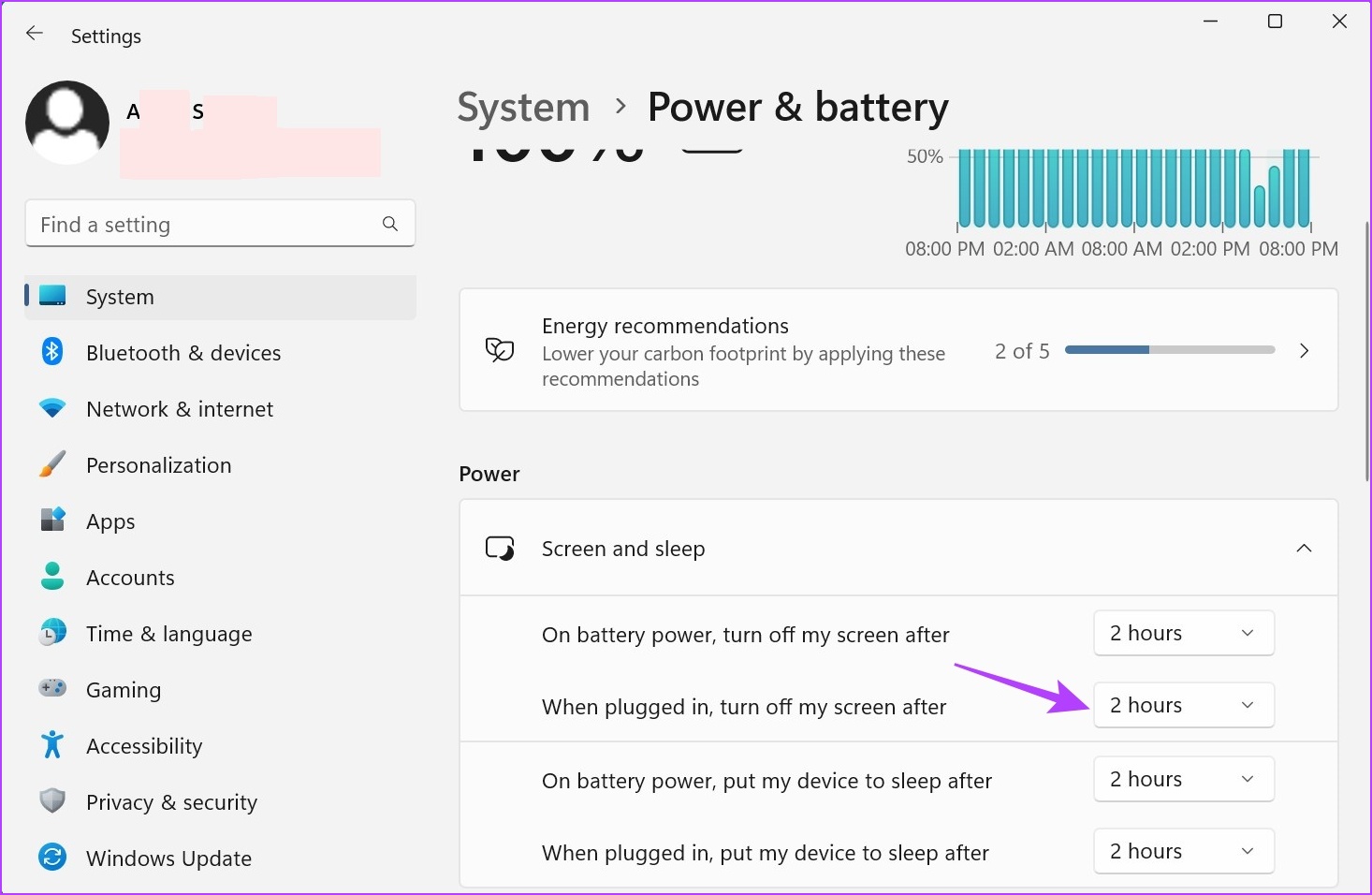

Step 7: Select the desired duration.


This will adjust the Windows 11 screen timeout duration according to your preferences. You can also check out our guide to fix Windows 11 screen lock automatically.
2. Change Screen Timeout in Windows 11 Using Control Panel
There are 2 main ways to change screen timeout in Windows 11 when using Control Panel. So, in addition to using the Power Options menu, you can also use the advanced power plan settings to make the necessary changes. Follow the steps below to do so.
Method 1: Using power options
Step 1: Click Search and type Control Panel. Then open the Control Panel from search results.
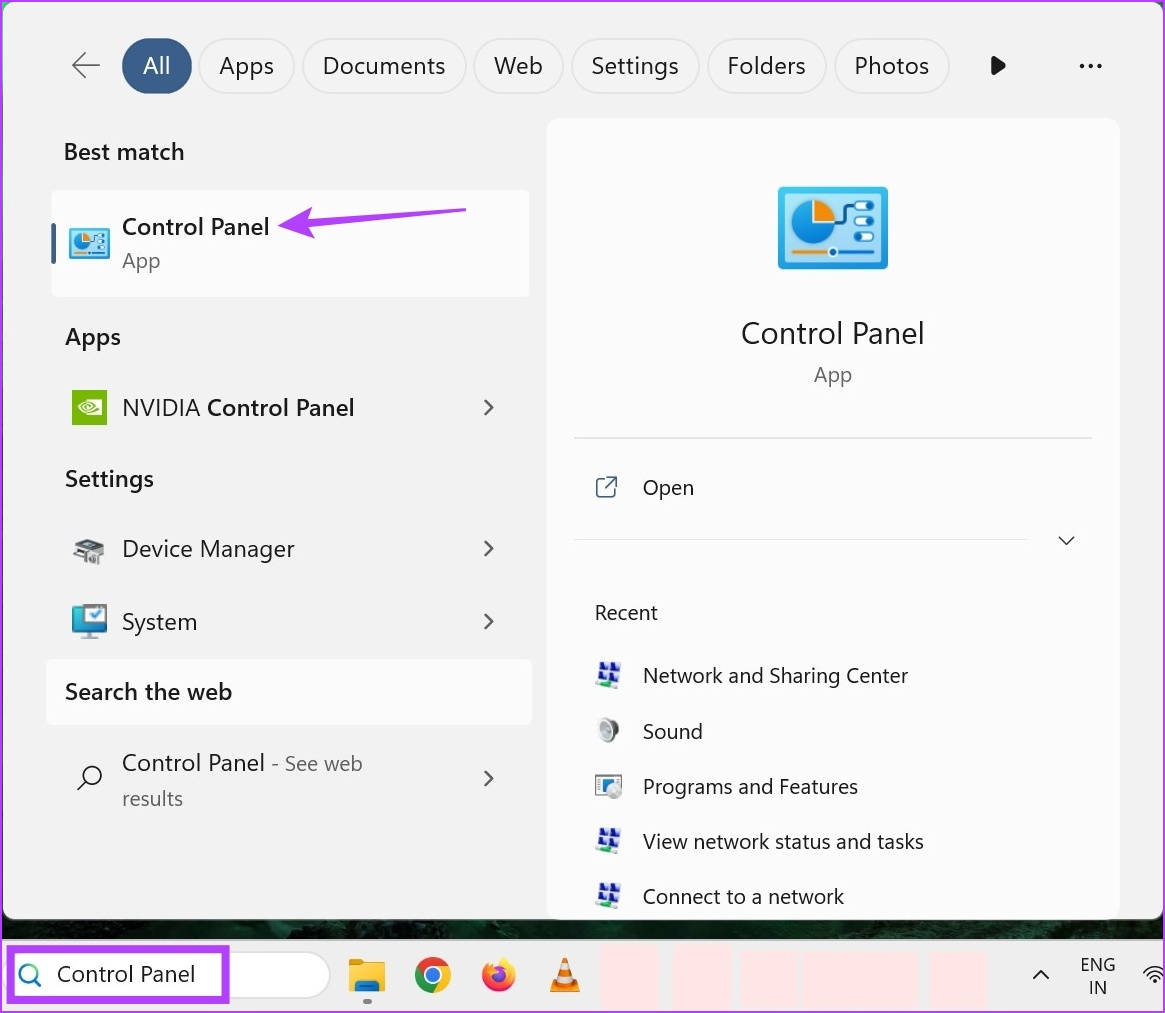

2nd step: Here, click on ‘Hardware and sound’.


Step 3: Click Power Options.


Step 4: In the sidebar, click “Choose when to turn off the display”.


Step 5: Here, click on the first drop-down menu in front of “Turn off screen” to adjust how long the screen will time out when running on battery power.
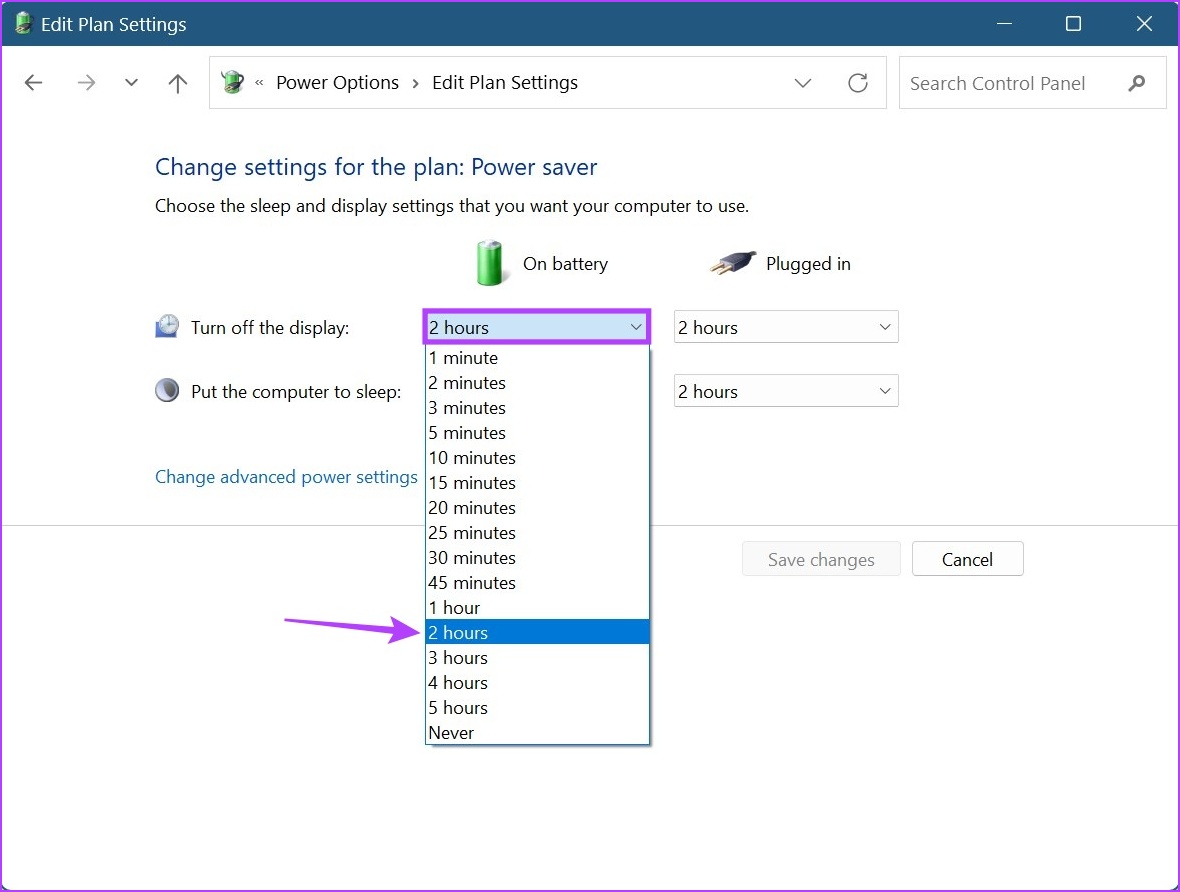

Step 6: Next, click on the second drop-down menu to select the preferred screen timeout duration when your device is plugged in.
Advice: You can also change the time when your computer goes to sleep.


Step 7: When done, click Save Changes.
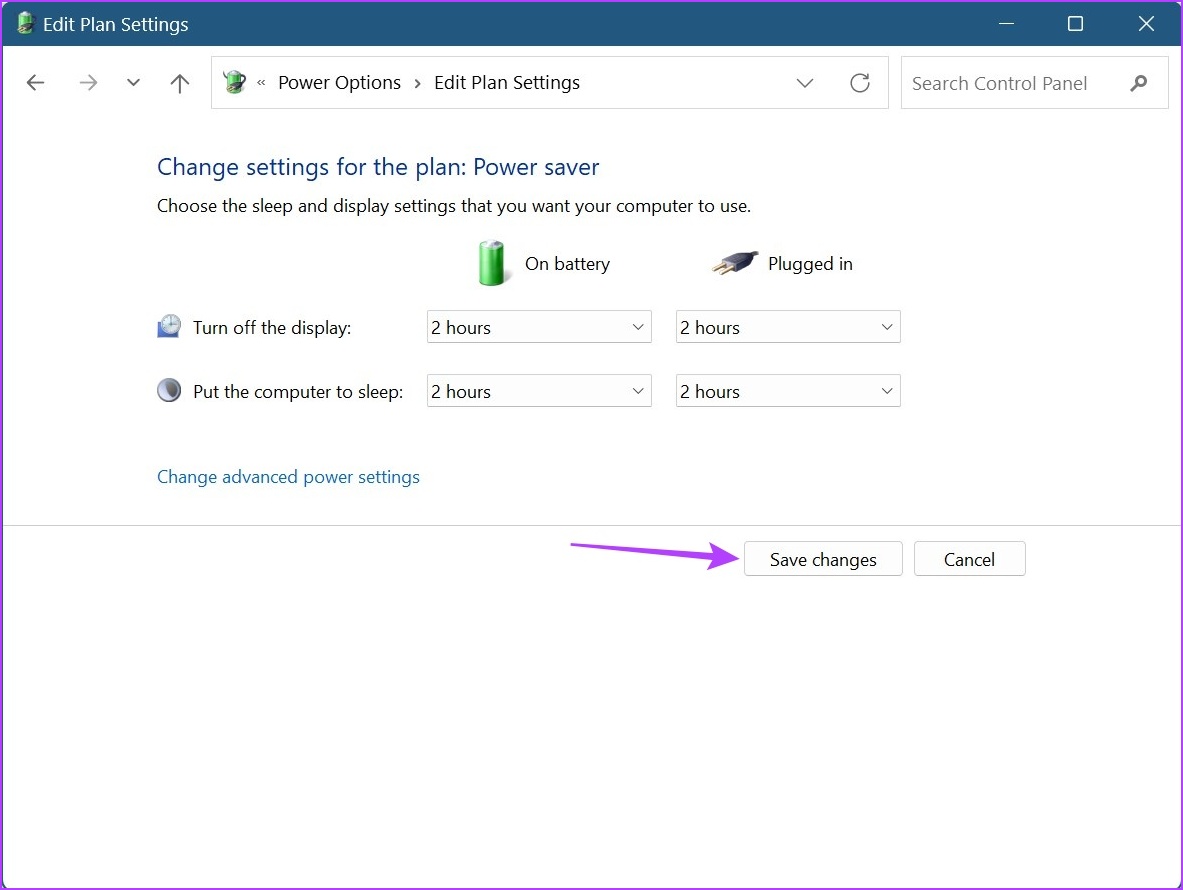

Method 2: Use advanced power plan settings
Step 1: Click Search and type Control Panel. Then open the Control Panel from search results.
2nd step: Click on ‘Hardware and sound’.


Step 3: Here, click on “Change plan settings” next to your currently active power plan. It is balanced in our case.


Step 4: Then click “Change advanced power settings”. This will open a separate window for power options.
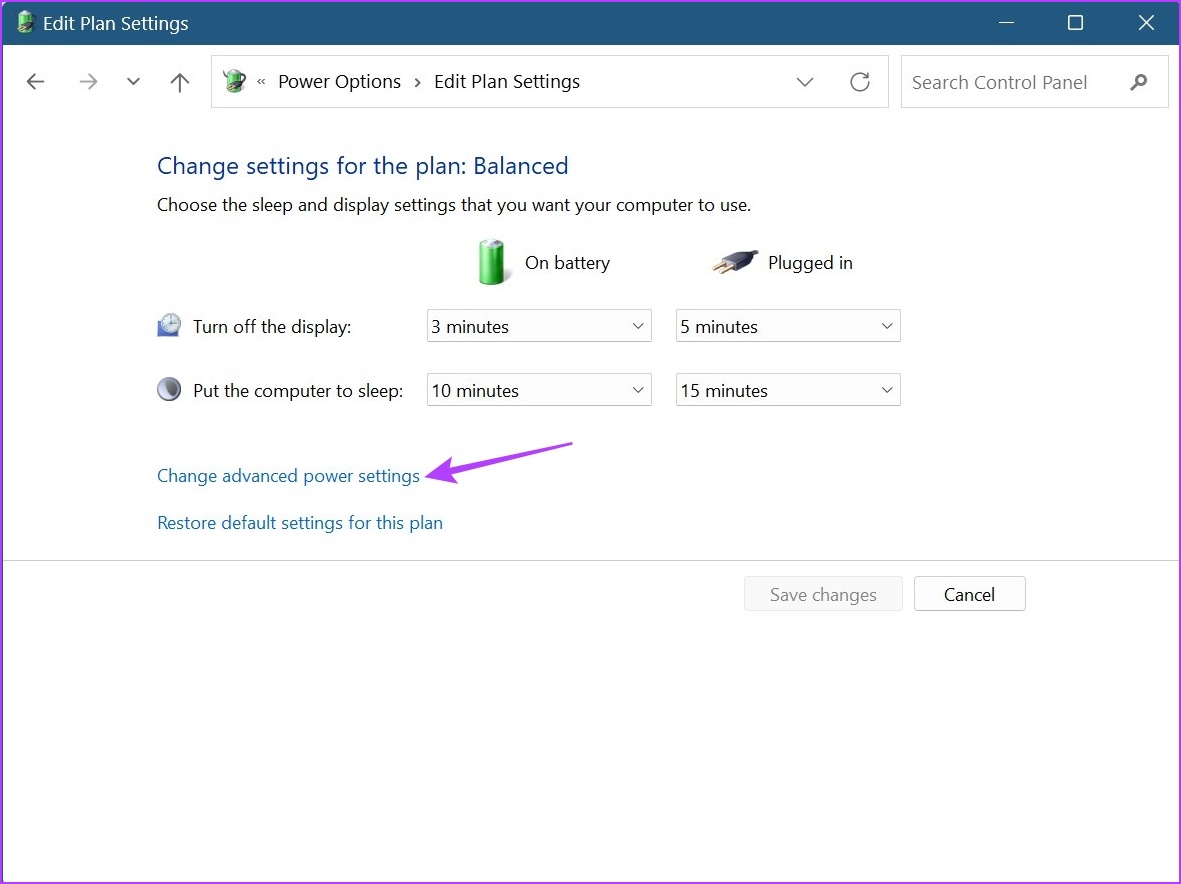

Step 5: Scroll down and click View. Once it expands, click “Turn off display after”. Next, click on the duration in front of On battery.


Step 5: Select a duration.


Step 6: Again, click on the time in front of Plugged in and select a duration.
Step 7: Then click Apply and OK to save and exit the window.


This will change the lock screen timing in Windows 11.
3. Change Screen Timeout Using Windows 11 Command Prompt
While you can also use the command prompt to change the screen timeout in Windows 11, unlike the methods listed above, you’ll need to enter the exact amount of time you want here in minutes. Follow the steps below to do so.
Step 1: Right-click on the Windows icon and select Terminal.


2nd step: Click the down arrow once the terminal is open and click Command Prompt.


Step 3: Here, type the following command and replace the x with the duration you want to set. This value must be in minutes.
powercfg -change -monitor-timeout-dc x
Step 4: Then press Enter. This will change the screen timeout duration when your device is on battery.


Step 5: Additionally, you can also type the following command to change the screen timeout duration when your device is plugged in. Simply replace the x with the desired duration in minutes.
powercfg -change -monitor-timeout-ac x
Step 6: Then press Enter to run the command.
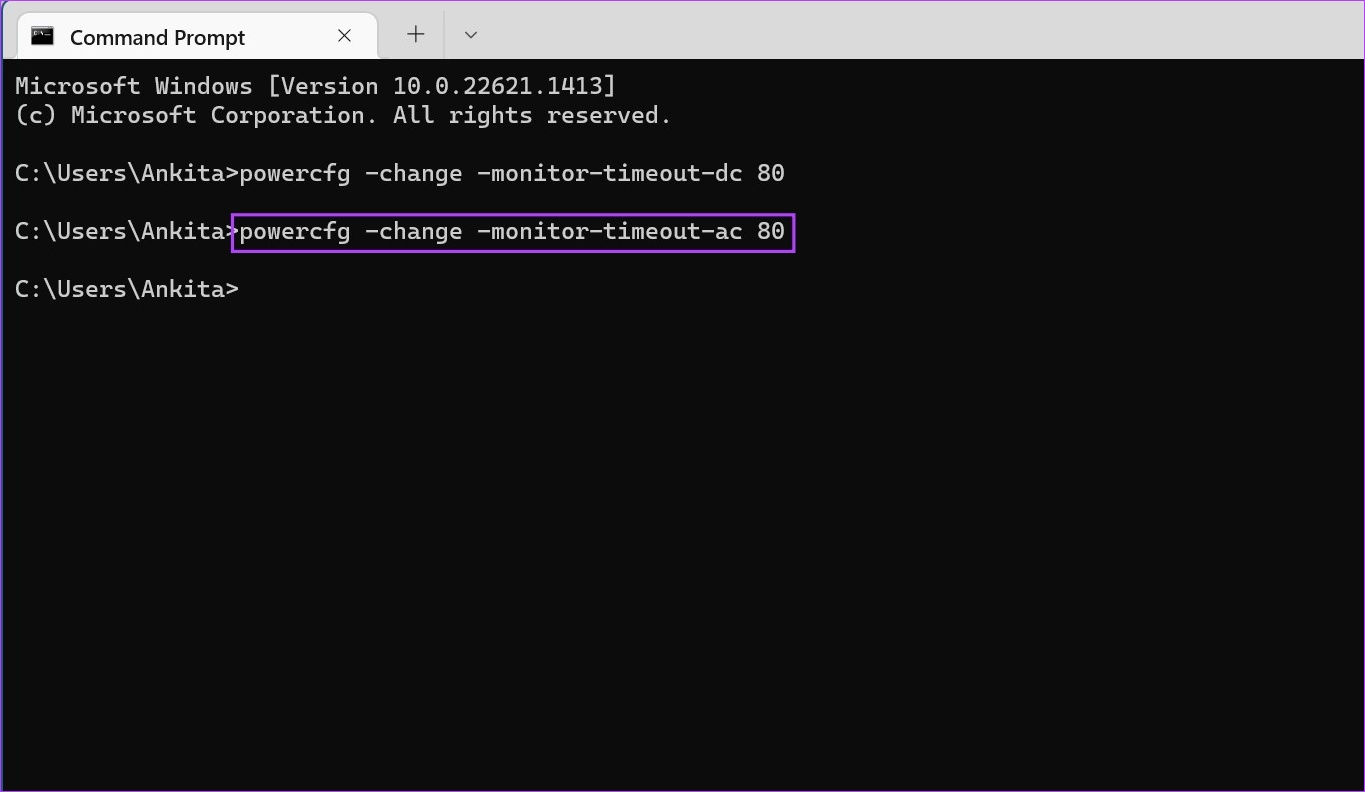

This will change the existing Windows 11 lock screen timeout settings. If you want, you can also set up wake timers using the command prompt to make your Windows 11 device screen wake up at a scheduled time.
FAQ on Changing Screen Timeout Settings in Windows 11
Yes, you can also change Windows 11 screen timeout settings using Registry Editor. However, you should only access Registry Editor if you are familiar with its use. Otherwise, it can cause issues with Windows 11 critical resources, causing them to fail.
You can change Windows 11 screen timeout settings as many times as you want.
Change screen timeout settings
So, those are all the ways to change screen timeout in Windows 11. And although technically you can set screen timeout to Never to make sure the screen always stays on turned on, it is always recommended to have a timer enabled, especially when your device is running on battery power.
If you want to personalize your device further, learn how to change the screen resolution in Windows 11.
